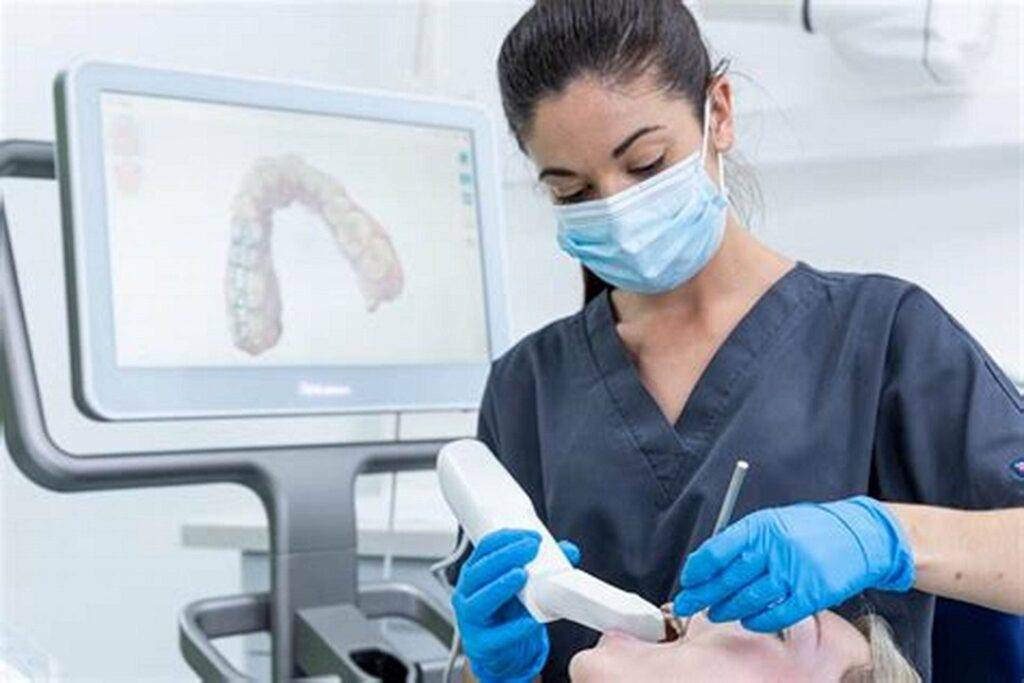The adoption of digital impressions is revolutionizing orthodontic practices by enhancing accuracy, improving patient comfort, and streamlining workflows. As technology advances, integrating digital impressions into your orthodontic practice can offer significant benefits and set you apart in a competitive field.
This blog explores the key aspects of integrating digital impressions into your practice, providing practical insights for a successful transition.
The Shift from Traditional to Digital Impressions
Traditional impressions involve using impression materials to create molds of the teeth and gums, which can be uncomfortable for patients and prone to inaccuracies.
Digital impressions use advanced intraoral scanners to capture detailed 3D images of the oral structures, offering a more precise and comfortable alternative. This shift not only improves the quality of the impressions but also enhances the overall patient experience.
Advantages of Digital Impressions
Increased Accuracy: Digital scanners provide highly accurate 3D images, reducing the risk of errors and ensuring a better fit for orthodontic appliances. This precision helps in achieving more predictable treatment outcomes and minimizing the need for adjustments or remakes.
Enhanced Patient Comfort: Digital impressions eliminate the need for messy impression materials, which can cause discomfort and gag reflex. The process is quick and non-invasive, making it more pleasant for patients and increasing their satisfaction with the treatment.
Efficient Workflow: Digital impressions integrate seamlessly with digital treatment planning tools and orthodontic software. This integration speeds up the process of designing and manufacturing appliances, reducing turnaround times and improving overall practice efficiency.
Sustainability: By reducing the use of disposable materials, digital impressions contribute to a more eco-friendly practice. This aligns with growing environmental consciousness and can enhance the practice’s reputation as a responsible provider.
Steps to Integrate Digital Impressions
Choosing the Right Scanner: Selecting the appropriate intraoral scanner is crucial for a successful transition. Consider factors such as image quality, ease of use, compatibility with your existing systems, and after-sales support.
Investing in a high-quality scanner will ensure that you maximize the benefits of digital impressions.
Training and Familiarization: Comprehensive training for your staff is essential for effective implementation. Ensure that your team understands how to operate the scanner, interpret the images, and integrate them into the treatment planning process. Many manufacturers provide training programs and support to help with this transition.
Workflow Integration: Digital impressions should be seamlessly integrated with your practice management software, treatment planning tools, and communication platforms.
This integration ensures that all aspects of your workflow are streamlined, from capturing the impressions to designing and fabricating appliances.
Patient Education: Informing patients about the benefits of digital impressions can enhance their experience and acceptance of the technology. Explain how digital impressions improve comfort, accuracy, and treatment outcomes, and address any questions or concerns they may have.
Continuous Evaluation: Regularly assess the performance of your digital impression system and stay updated with advancements in technology. Continuous evaluation and adaptation will help you maintain optimal performance and keep your practice at the cutting edge of orthodontic care.
Real-World Applications
Many orthodontic practices have reported significant improvements after integrating digital impressions. From faster turnaround times for appliances to more accurate treatment planning and higher patient satisfaction, the benefits are evident. Sharing success stories and case studies can provide valuable insights and inspire confidence in the new technology.
Integrating digital impressions into your orthodontic practice represents a significant advancement in technology, offering numerous benefits including enhanced accuracy, improved patient comfort, and increased efficiency.
By carefully selecting the right equipment, investing in staff training, and ensuring seamless integration with your existing systems, you can successfully adopt this technology and elevate the quality of care in your practice. Embrace the future of orthodontics with digital impressions and provide your patients with a superior treatment experience.


